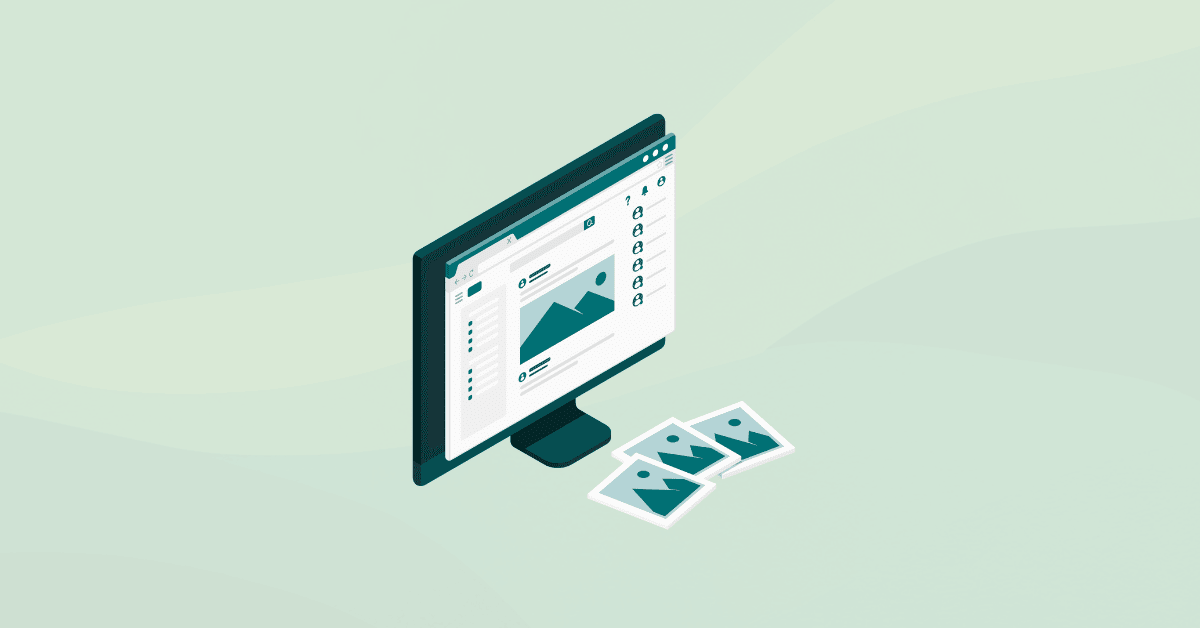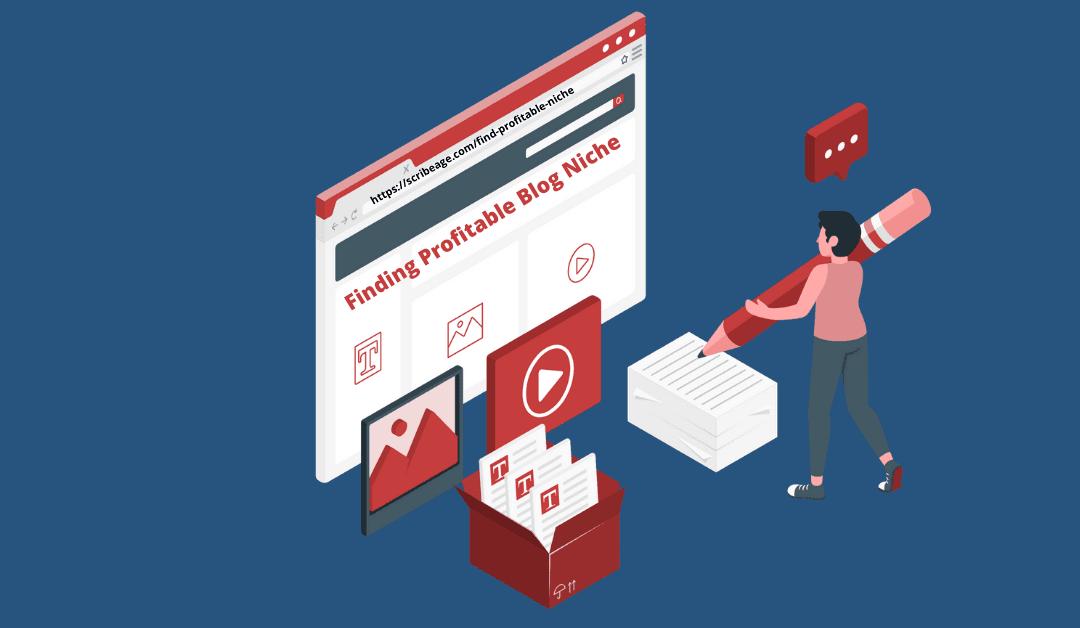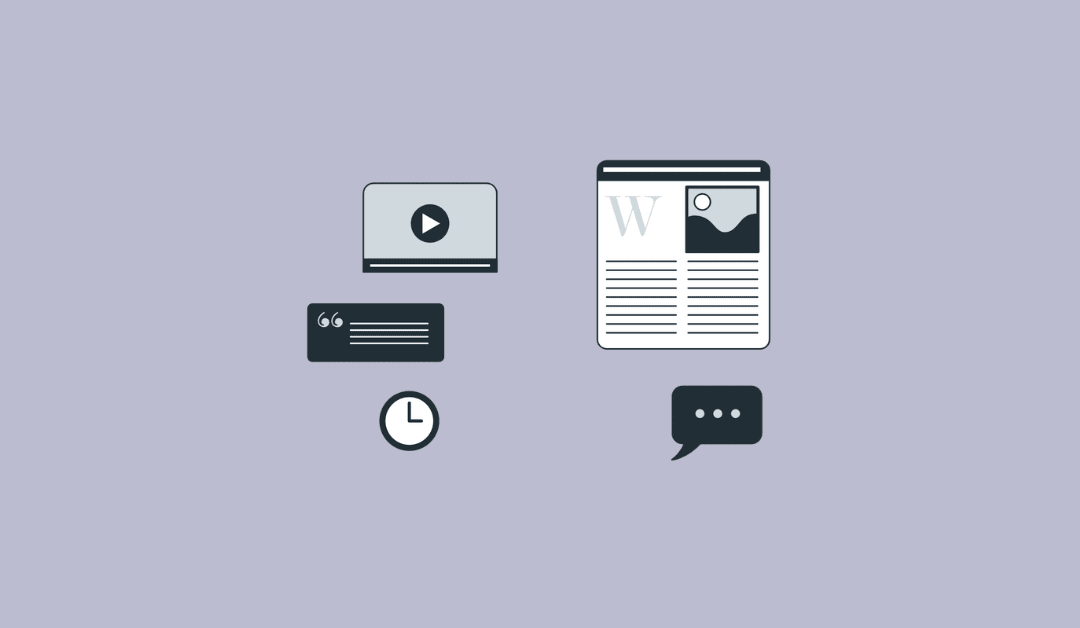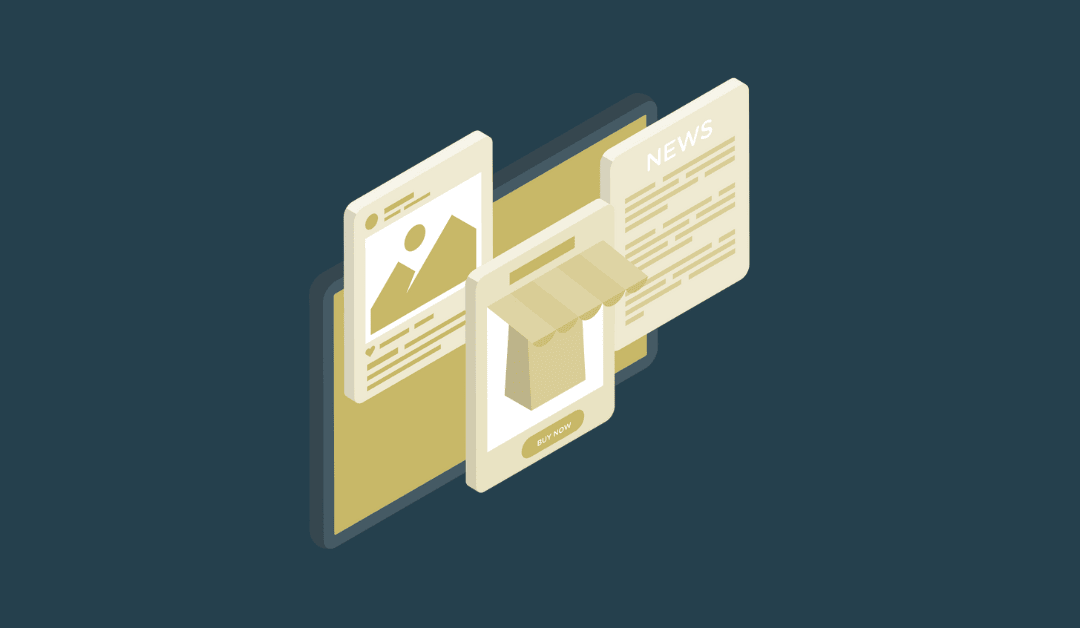Blogging has become an integral part of our online communication system. A blog can be a powerful tool whether you’re an individual looking to share your passion, a business aiming to establish an online presence, or an organisation seeking to connect with its audience. We will explore what a blog is and its benefits and provide a step-by-step guide to help you understand why you need one.
Blogging has come a long way since its inception in the late 1990s. Initially, blogs were primarily personal online journals where you could share your thoughts and experiences with the world. Over time, they evolved into powerful platforms for information dissemination, discussion, and marketing. Today, like before, blogs continue to play a significant role. They serve as valuable sources of information, entertainment, and community engagement. Whether you’re an individual, a business, or an organisation, having a blog can help you achieve your goals, reach a broader audience, and establish authority in your field.
Table of Contents
What is a Blog?
A blog is a regularly updated website or web page where individuals, businesses, or organisations share their knowledge, opinions, experiences, or fictional or true-life stories in a chronological format. Blog posts are typically displayed in reverse chronological order, with the most recent content appearing at the top. They often encourage reader interaction through comments and social media sharing. The word “blog” is a combination of the words “web” and “log”; in the early stages, a blog was a personal weblog or journal in which someone could share information or their opinion on a variety of topics.
You can use a blog for personal use or to fulfil a business need; a blog needs to be updated frequently by adding new posts. It is a tool that allows you to engage more with an audience by analysing how many readers share your blog posts on social media or by enabling readers to comment on your individual posts.
A blog post is an article or entry published on a blog; different blogs cover varying topics, from food, tech, and fashion to marketing. A blog can be thought of as providing ongoing commentary on a theme and is intended to engage with a community interested in a topic and the personality or products of the blogger or sponsoring business. Blogging remains a powerful means of self-expression, communication, and business growth.
When you understand what a blog is and recognise its numerous benefits, you can harness its potential to achieve your personal, professional, or organisational goals. Embracing this versatile tool can increase visibility, audience engagement, and long-term success in business. Start your blogging journey today and unlock the many possibilities that await.
What is a Blog Post?
A blog post is an online article that people write to share information, ideas, or stories with others on the internet. It’s a way for people to express themselves and communicate with a wider audience. It’s like writing a letter to a friend, but instead of sending it in an email, you put it on a website for everyone to read. You can write about anything you’re interested in, whether it’s a hobby, a recipe, travel experiences, or advice on a topic you know well. Blog posts can be short or long, often including pictures, website links, and sometimes videos.
They can be written in any tone of your choice, friendly and conversational style, making it easy for people to read and understand. People read blog posts to learn something new, get inspired, or enjoy a good story. It’s like having a conversation with someone over the internet, and it’s a great way to share your thoughts and knowledge with the world.
Difference Between a Blog and a Website
A blog and a website are both online platforms, but they have different purposes and distinct characteristics. A blog is a type of website that is updated regularly with new content presented in reverse chronological order, while a website is often static in nature and not updated frequently, with content organised in pages.
A blog is a subset of a website, characterised by its frequent, chronological content updates, while a website is a more comprehensive online platform with diverse content and functionalities that serve various purposes beyond just publishing blog posts.
Here are some key differences between a blog and a website
- Purpose
- Blog
A blog is a website specifically designed for publishing and organising chronological, regularly updated content. It primarily focuses on sharing articles, posts, or entries, often written by a single author or a group of authors. Blogs are commonly used for personal diaries, news updates, opinion pieces, and niche-specific content.
- Website
A website is a broader term encompassing many online platforms and content types. Websites can serve various purposes, including e-commerce, business promotion, informational resources, social networking, entertainment, and more. Unlike blogs, websites are not limited to a chronological stream of content and can have static pages alongside dynamic content.
- Content Structure
- Blog
Blogs are organised by date, with the most recent posts appearing at the top and older ones descending below. They often have categories or tags to help users navigate specific topics or articles within the blog.
- Website
Websites can have a hierarchical structure with multiple pages, such as a homepage, about page, contact page, services or product pages, and more. While they can also include a blog section, websites are not restricted to chronological order for their content.
- Frequency of Updates
- Blog
Blogs are typically updated more frequently, with new posts published regularly, such as daily, weekly, or monthly. The focus is on providing fresh and up-to-date content to engage readers.
- Website
Websites, especially those serving as business or informational platforms, may not require frequent updates. Some pages, like the homepage or About page, may remain relatively static for long periods, with updates occurring less frequently.
- Audience Engagement
- Blog
Blogs often encourage reader engagement through comments and discussions on individual posts. Bloggers frequently interact with their audience through comments and social media.
- Website
While websites can also have interactive elements, they may prioritise other forms of engagement, such as contact forms, e-commerce transactions, or providing information rather than fostering discussions.
- Design and Functionality
- Blog
Blog designs often focus on readability and ease of navigation for blog posts. They may have a simple layout with a prominent content feed.
- Website
Websites can have more diverse and complex designs with broader functionalities. They are tailored to the specific goals of the website, whether it’s selling products, sharing information, or providing a platform for various services.
- Monetisation
- Blog
Blogs can be monetised through various means, including ads, affiliate marketing, sponsored content, and donations. Monetisation often revolves around the blog’s content and readership.
- Website
Websites may have multiple revenue streams, depending on their purpose. E-commerce websites sell products, while business websites may generate income through lead generation, online services, or advertising.
What is a Blog Used for?
- To Generate Traffic to Your Site and Turn them into Leads
Website pages like the homepage and About Us page can only generate limited website visitors. These pages are important for people who are already interested in your products, but they don’t usually attract new visitors who are just starting to explore. This is where your blog becomes important. Your blog can be a helpful resource for your website visitors even before they are ready to buy from you.
For example, if you sell products for online stores, some online store owners might already be looking for your products online. However, most of them won’t be ready to buy right away.
On the other hand, if you start writing blog posts about tips for people who are new to running a retail business, like “How to start an online store” or “Advantages of online stores vs. physical shops,” you can slowly build an audience that appreciates your content and finds it useful. Later, when these online store owners see their businesses growing, partly because of the information from your blog, they will already know about your brand and trust it as a helpful source. That’s when they will visit your product pages and consider buying from you.
Related: 29 Brilliant Ways to Increase Your Website Traffic
- To Build an Online Community and Engage with Your Audience
Think about making a blog to connect with people who like the same things as you. For example, you could start a food blog where you talk about recipes you like, and you can ask your readers to share their recipes too. Or, you could have a blog about do-it-yourself (DIY) projects Where you show the fun projects you’ve done in your own home and ask your readers to share their DIY ideas with you in return. It’s all about sharing and connecting with people who have similar interests. Blogs can foster a sense of community among like-minded individuals. Readers can leave comments, engage in discussions, and connect with the blogger and other readers.
- To Share Information about Your Niche and Become an Expert in Your Industry
Blogs are often used to share information on various subjects, including hobbies, travel, cooking, fashion, technology, health, and more. You can use a blog to provide valuable insights and expertise in your chosen niche. Blogs are a great medium for creating educational content. You can use your blog to publish tutorials, how-to guides, and informative articles that help readers learn new skills or solve problems. Blogging is a perfect way to become known as an expert in a niche that interests you, from tech, sport, food, fashion and fitness.
- To Rank Higher on Search Engines
Usually, a business uses a blog to help its website appear on the first page of Google and other search engines. Instead of paying for ads or using special tricks (SEO), blogging is a better way to achieve this in the long run. If you are running a graphics design company and need people to know about your work in your locality and beyond. To improve your website’s visibility, you start writing and publishing regular blog posts about graphics design.
As time passes, more people will visit your website, and other companies will link to it because they find your graphic design information helpful. Google will notice this and start seeing your company as a reliable source for graphic design info.
After some trial and error, your blog posts begin showing up on the first page of Google when people search for things like “graphic design,” Blogs can improve a website’s search engine optimisation (SEO) by providing fresh, relevant content that attracts search engine traffic.
- Monetisation
When you blog continuously for a long time, you can monetise your blogs through various means, such as advertising, sponsored content, affiliate marketing, or selling digital products like e-books or online courses. Many people like me use blogs as a source of income to make money online through various channels we can think of.
Why Do You Need a Blog
A well-maintained blog can be a powerful tool for businesses to enhance their online presence, engage with their audience, build authority, and drive growth. However, creating high-quality, relevant, and consistent content is important to reap the full benefits of blogging.
A blog allows you to create and share relevant content with your target audience. This can help you attract potential customers, drive website traffic, and increase your business visibility. Search engines like Google and Yahoo reward websites with fresh and relevant content. Regularly publishing blog posts with relevant keywords can improve your website’s search engine rankings, making it easier for potential customers to find you online.
A well-researched and informative blog can position your business as an industry expert. This can build trust with your audience and make them more likely to choose your products or services over your competitors. Blogs provide a platform for engaging with your customers. You can respond to comments, answer questions, and foster community around your business.
Blogs are an excellent way to educate your audience about your products, services, and industry trends. You need a blog to provide how-to guides, tutorials, and in-depth explanations to help your customers make informed decisions. With a blog, you can also showcase the personality and values of your brand. This can help humanise your business and connect with your audience more personally.
By offering valuable content, you can encourage visitors to subscribe to your blog or sign up for your newsletter. This helps you build an email list of potential leads you can nurture and convert into customers over time. You also use blogs to promote your products or services indirectly. For example, you can create informative content that subtly highlights the benefits of your offerings, making it more likely for readers to consider them.
You can use your blog to keep your audience informed about your company news, product launches, and industry updates. This can help maintain customer interest and loyalty. You can also use your blogs as analytics tools to track user engagement, see which topics are most popular, and gather valuable feedback from your audience. This data can inform your marketing strategy and product development efforts.
Creating engaging blog content may seem daunting initially, but you can scale your writing skills and write better content faster with AI tools.
How To Start Blog
Starting a blog can be a rewarding way to share your thoughts and ideas with the world, and it’s easier than you might think. Here are some steps to get you started:
- Research Your Target Audience
To get started with a blog, it’s crucial to think about the people you want to reach with your blog. Who is your blog for? Who do you want to read what you write? Before you begin, you need to think about the specific topic you’ll be writing about and why.
You will need to figure out your target audience by making a detailed picture of the typical person who might be interested in your blog. Knowing your audience will help you decide on a niche topic your blog will focus on; this will help you develop a focused blogging strategy.
- Choose a Blogging Platform
To create your blog, you’ll need a blogging platform. A blogging platform like WordPress helps you create, control, and publish content on online. There are many popular blogging platforms you can use to create a professionally-looking blog. WordPress is one of the most popular choices due to its flexibility and scalability. WordPress is simple to use, with many free themes and an easy visual editor. There are many platforms to choose from, such as WordPress, Blogger, and Wix, but you must consider factors such as ease of use, customisation options, and cost.
- Pick a Domain Name and Hosting
Your domain name is your blog’s web address (e.g. www.scribeage.com). Choose a domain name that reflects your blog’s theme and is easy to remember. You’ll also need a reliable hosting provider to store your blog’s files and make them accessible on the internet.
- Set Up Your Blog
Install your chosen blogging platform and follow the setup instructions. This usually involves configuring your domain, selecting a theme, and customising your blog’s appearance.
- Create High-Quality Content
High-quality content is the heart of your blog. You must Write informative, engaging, and well-researched articles catering to your target audience’s interests. Use proper grammar and spelling, and make your content visually appealing with images and multimedia. You must create interesting content for everyone who reads it, especially for customers who read every post. Focus on creating how-to posts, list-based posts, or thought leadership content.
- Optimise for SEO
Learn about search engine optimisation (SEO) to improve your blog’s visibility in search engine results. This involves using relevant keywords, optimising meta descriptions, and creating high-quality backlinks. Your SEO strategy must be in place to rank higher on search engines and drive traffic to your new blog.
Here is my ultimate step-by-step guide on creating and monetising a blog. Blogging is a journey; building a successful blog takes time and effort. Keep writing, engaging with your audience, and refining your strategy, and your blog will grow over time.
Final Thoughts
A blog can be a beneficial asset, offering a platform for self-expression, communication, and growth. Whether you’re sharing your hobbies or a business looking to expand its online presence, a blog is a valuable marketing tool for your online business. It provides a space where your voice can be heard and your ideas can be shared, making it a worthwhile endeavour for many.





0 Comments